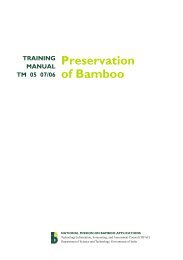ASTM
You also want an ePaper? Increase the reach of your titles
YUMPU automatically turns print PDFs into web optimized ePapers that Google loves.
1963<br />
1964<br />
1964<br />
1964<br />
1964<br />
1965<br />
C-5 on<br />
Manufactured<br />
Carbon and<br />
Graphite Products<br />
A-4 on<br />
Iron<br />
Castings<br />
D-30 on<br />
Composite<br />
Materials<br />
G-1 on<br />
Corrosion<br />
of Metals<br />
G-2 on<br />
Wear and<br />
Erosion<br />
G-3 on<br />
Weathering<br />
and Durability<br />
44 “Extending the Influence”<br />
A<br />
enabled suburban developers in the South<br />
to venture into mass-produced housing<br />
because suppliers quickly<br />
standardized materials according<br />
to <strong>ASTM</strong> standard specifications<br />
for bricks, cement,<br />
gypsum, and lime.<br />
<strong>ASTM</strong>’s structural steel specifications<br />
were applied in some of the<br />
most prestigious and demanding<br />
construction projects of the postwar<br />
era. Seattle’s Space Needle, a<br />
soaring 600-foot steel tower that<br />
was built for the 1962 World’s Fair, featured<br />
three sets of tapered steel legs<br />
made according to Standard A 36. The<br />
standard described a new type<br />
of hardened carbon steel that could<br />
handle extreme design stresses. An<br />
<strong>ASTM</strong> publication reported that the<br />
Space Needle had “less than 3-inch<br />
maximum sway at the top; it is<br />
designed for heavy seismic loads<br />
and wind gusts. The greater strength<br />
of A 36 steel permitted higher<br />
design stresses, welded<br />
fabrication, and cost savings.”<br />
organization renamed<br />
itself once again and<br />
became the American<br />
Society for Testing<br />
and Materials. The<br />
conjugation emphasized<br />
that <strong>ASTM</strong> was<br />
devoted to the<br />
development of standard<br />
material specifications,<br />
not only standard<br />
test methods.<br />
Fortunately, the name<br />
change that reflected<br />
this broadening of<br />
activities over five<br />
decades did not require a new acronym, enabling<br />
<strong>ASTM</strong> to use its old and widely-recognized logo.<br />
B<br />
ON THE THRESHOLD OF A<br />
NEW ERA<br />
In 1961, sixty years after the<br />
American Section had turned<br />
itself into the American Society<br />
for Testing Materials, the<br />
A. The great strength of A 36 steel permitted higher design stresses,<br />
welded fabrication, and cost savings in Seattle’s Space Needle.<br />
B. In 1961, <strong>ASTM</strong>’s magazine reported on the use of <strong>ASTM</strong> standards<br />
to specify the more than two million pounds of aluminum in this radio<br />
telescope, considered the world’s most accurate.<br />
C<br />
C. <strong>ASTM</strong> Race Street headquarters, 1964.




